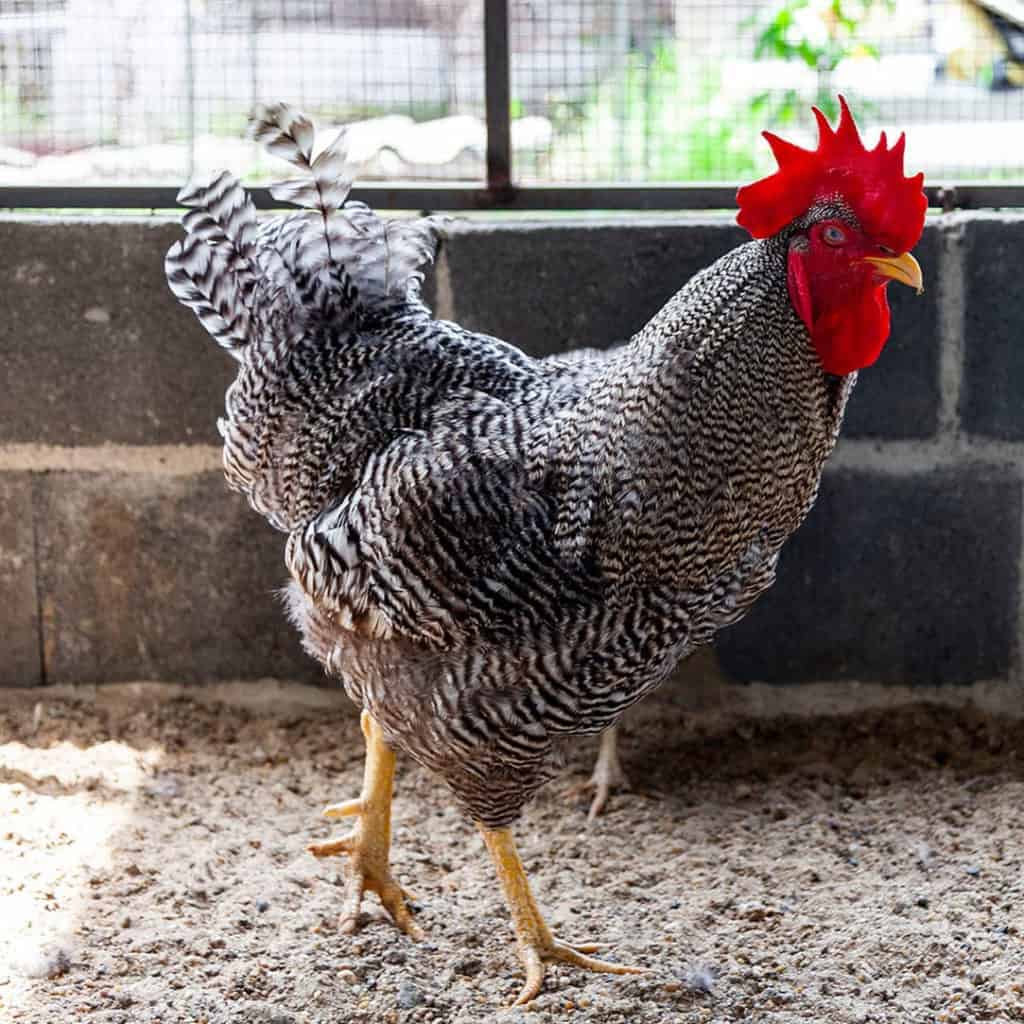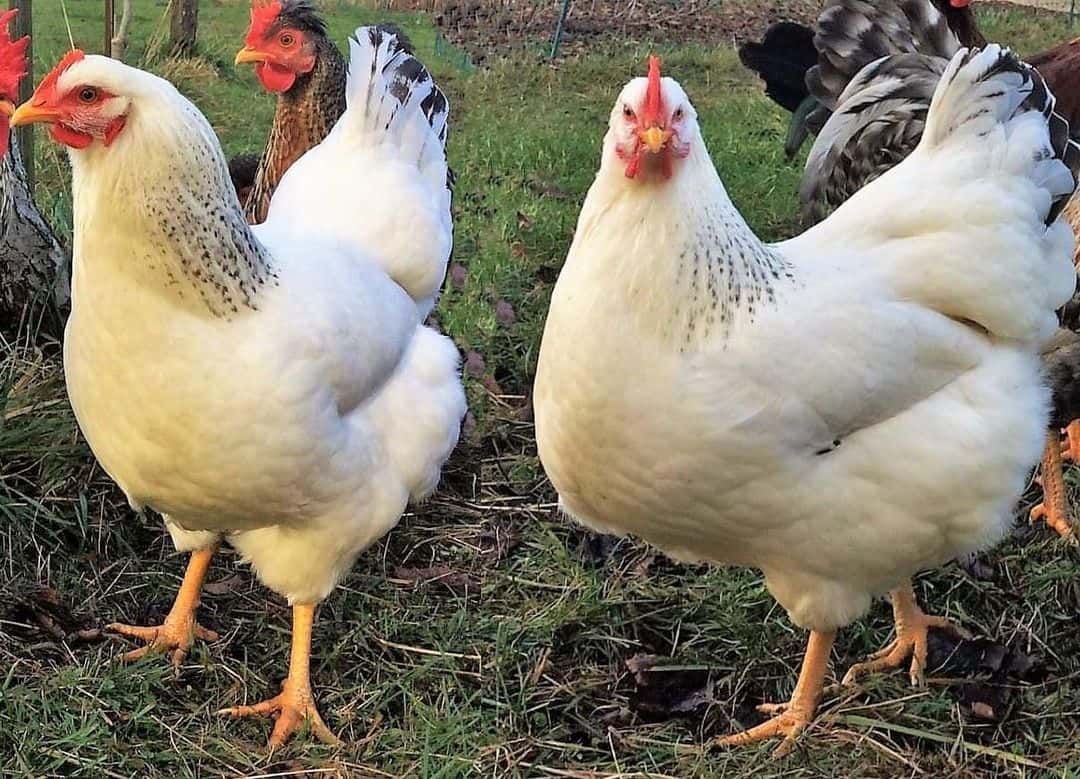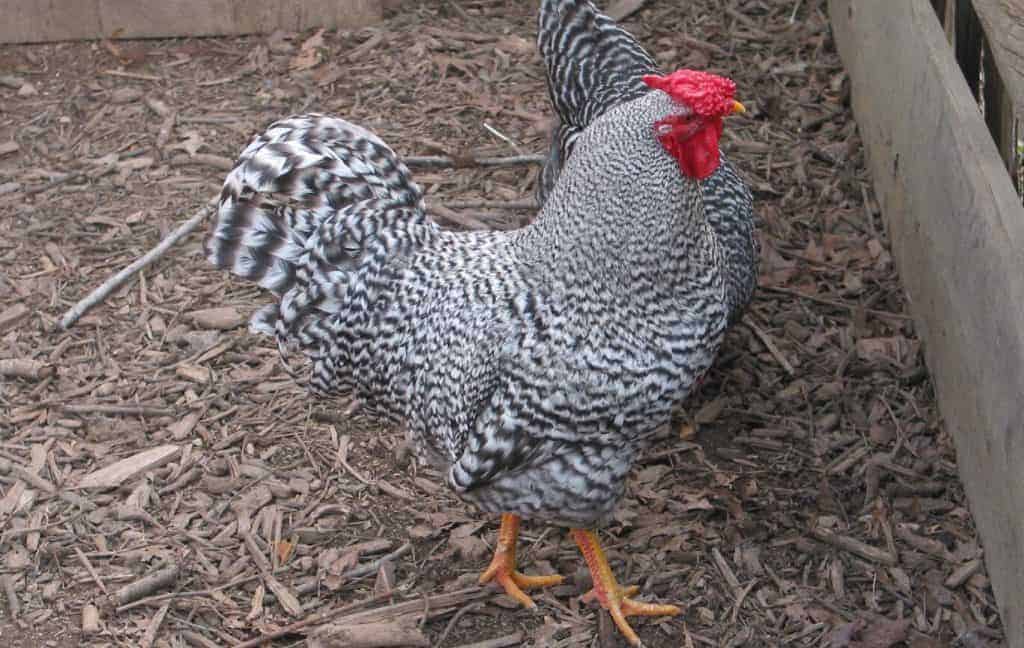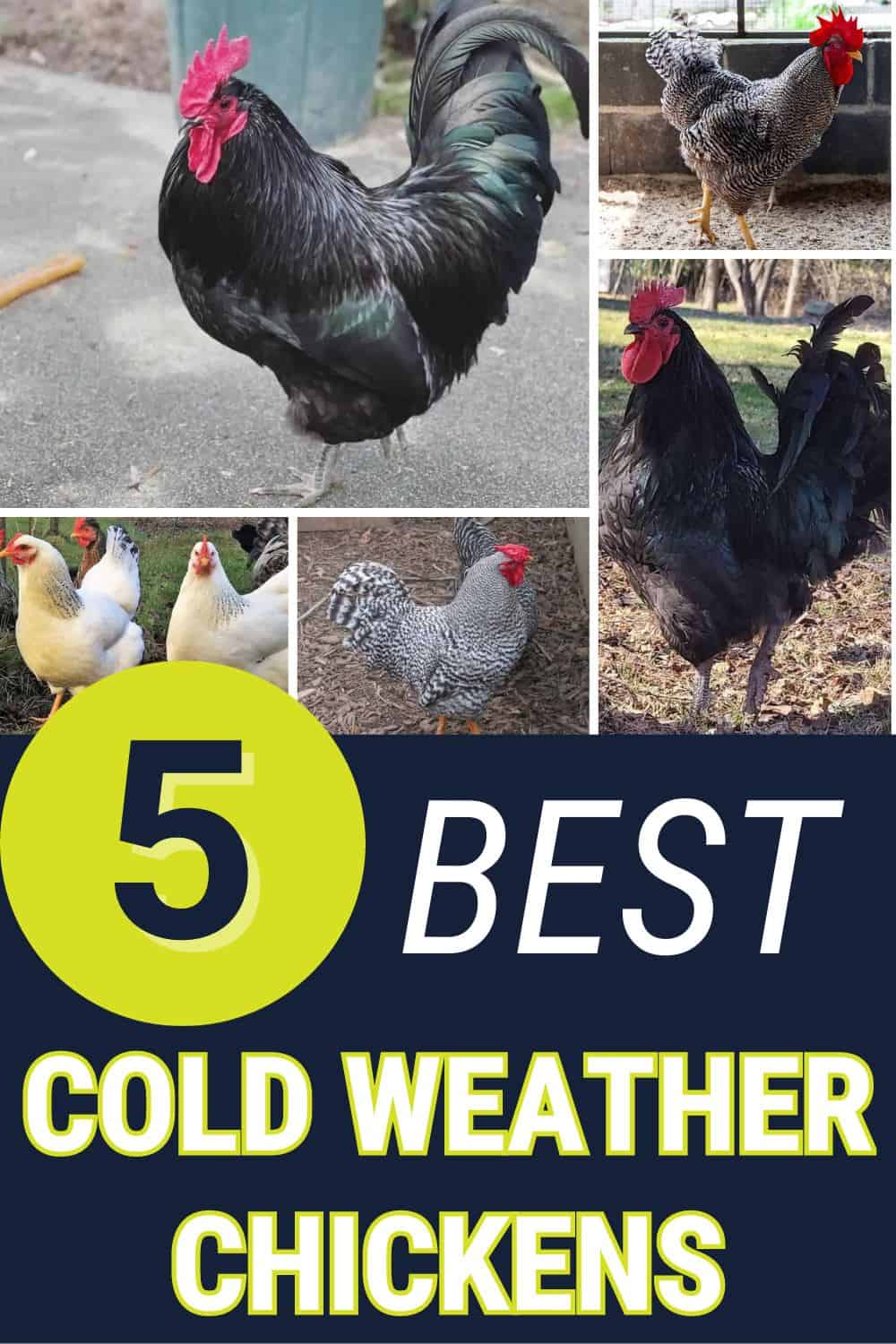A quick trivia for non-chicken owners is that chickens are capable of bearing whatever the weather is, may it be sizzling hot summer or cold winter weather. Ergo, if you live in a country with an excessive cold, it is definitely a smart move to raise cold weather chicken breeds.
What is a cold hard breed chicken?
This may be new information to non-chicken enthusiasts. However, for those who are, then this statement will come as no surprise. Just like any animal, there are different breeds of chicken that are often classified depending on how they can live through a diverse climate. Some chicken breeds can only handle winter, and there are some that can only manage summer. In addition to that, there are also numerous chicken breeds that can handle both well and comfortably.
If you are an owner of a poultry farm in a country that often experiences extremely cold winters, then you are definitely growing in your backyard some cold-hardy breed chickens. These chickens that can handle cold weather effortlessly are labeled as cold-hardy chicken breeds.
Although, cold-hardy breed chickens do not necessarily mean that they are exempted from experiencing winter calamities and frostbites. It is still recommended that you be sure that they are in a safe and comfortable coop with proper ventilation for your chickens. Chickens with a significant and single comb and large wattles are at a higher chance for frostbite.
Most cold-hardy chicken breeds are dual-purpose but are known as the best egg-laying chicken breeds for cold weather. Nonetheless, not all can catch up with the rate of the others as they are occupied in making themselves warm. These breeds are best adapted to the cold climates that they can still produce a good amount of eggs annually.
1. Australorps

As the name implies, Australorps are considered an exemplary dual-purpose cold-hardy chicken that originated in Australia. Its name is a shortened version of Australian Black Orpington.
Although there are numerous color varieties of the Australorp chicken, the American Poultry Association only acknowledged the original color of the chicken breed, which is black. Nevertheless, the black, white, and blue varieties of this breed are recognized by the Australian Poultry Society.
The Australorp is an enormous and heavy chicken with shiny and soft black feathers. It has an upright posture that helps it carry its tail up high. Australorps have a well-rounded and packed breast.
Its beak has the same color as its eyes which is midnight black. Almost all colors for the Australorps chickens are black except its earlobes, wattles, and combs that red in the shade. Its upright comb should have seven points at the very most. The chromatic green gloss of its feather is mainly seen when exposed to sunlight.
Though it is also cultivated to produce meat, Australorp chickens can lay up to 364 eggs in a year. Hence, they are considered to be the most producing egg.
The way it walks is quite majestic, which is exceptionally different than the others. It walks elegantly like the princesses or duchess you see in a social gathering.
Although Australorps are pretty shy the first time, this cold-hardy chicken is proven to be manageable. They are easy to maintain and taken care of due to their carefree nature. They are adaptable and have no problems when confined or in a free-range. Therefore, they are pretty much good when surrounded by children. Learn more about Australorps.
2. Plymouth Rock Chickens

Plymouth Rock chickens are considered to be dual-purpose. It means that they are capable of producing meat and can lay eggs. This is a cold-hardy chicken breed that is able to lay eggs more or less around two hundred fifty eggs in a year. A Plymouth rock chicken is considered to be one of the oldest breeds in America’s history.
As for the Plymouth rock’s appearance, they are commonly called “black and white bars” due to their color. However, the barring design differs for both rooster and a hen. The roosters tend to have a balanced distribution of the white and black barring. Frequently, its feather usually ends in a pitch-black tip.
On the other hand, the black bars of the hens are somewhat wider than their white bars. With this, it defines their color more than the male Plymouth rock as they are slightly darker in a gray hue.
Its body is quite large and in a triangle shape with a broad back and tight breast chest. The feathers of the barred Plymouth rock chickens are soft but full and loose. They have pretty much clean legs and yellow skin, having four toes in each of their feet. In contrast, it has bloodshot red-eye and a horn-colored beak.
Plymouth rocks often prefer to be provided enough freedom. They enjoy free-range. It is recorded to have seven acknowledged varieties. Namely, Colombian, barred, blue, buff, white, and silver penciled. Learn more about Plymouth Rock chickens.
3. Delaware

Let us add Delaware to our list of dual-purpose cold hardy chicken breeds. You can expect this breed to lay up to 4 eggs in a week or at a total of around 200, either large or jumbo egg size annually. It is a medium-sized chicken with a broad shoulder, long and deep body.
Delaware chicken has only one variety. Its color is mostly white but with a little black barring seen on its wings, tail, and hackles. This chicken breed makes a stunning rooster because of a black barring seen on its tail and neck.
Looking at the side of the Delaware chicken from afar, you will see a U indentation at its back and an inverted triangle body. Most of the colors in its facial feature are red, including its wattles, earlobes, and comb with no more than five points. Its skin and beak are yellow in color. It also has muscular legs and four toes in each of its feet, similar to Plymouth Rock.
Delaware is also considered to be a low-maintenance chicken breed that is perfect for new chicken owners. They only require nothing more than just the bare necessities in life, such as water, food, and comfortable shelter. They are also friendly. That is why it is the best addition to the flock at it goes along well with the other breeds. Delawares also do well in children and with their people as they are not easily startled.
4. Dominiques

Similar to Plymouth Rock chicken, Dominiques are considered the oldest chicken breed in the history of America. Dominickers and Pilgrim fowl are other terms for them. The pilgrim name for the Dominiques originated when they were brought to the New World by the Pilgrims.
Dominiques are also considered to be dual-purpose chicken but more productive in laying eggs than the meat. They are known to have produced around 150 up to 200 eggs in just a year.
Combs is one of the factors why chickens are recognized to be cold tolerant. As for the Dominiques, its pea comb allows them to thrive during the winter season. Its pea comb is an advantage because of its low chances of getting frostbite.
Both breeds might have many similarities but one difference that you can tell them apart is its comb. Dominiques have a comb-like flattened cushion in red. Hence the term, rose comb. The end of its comb has a somewhat bending backward spike that is known as the leader.
Similar to Plymouth Rock chicken, they also have barred black and white feathers. Although, its barring is in a cuckoo or jagged pattern and more subtle and low contrast black and white barred feather.
Since they have existed for a long time now, this breed is also considered to be a scavenger. They enjoy free-ranging and are independent as they can feed themselves by hunting bugs and plants. Therefore, they are known to be very curious and intelligent breeds. When it comes to their personality, Dominiques are calm, which makes them low maintenance. In spite of the fact that Dominique roosters can be aggressive, it is the opposite for the hens. The hens of the Dominique are good mothers. Hence, they will sit on its egg and help it hatch. Learn more about Dominique Chicken.
5. Jersey Giant

Jersey Giant is acknowledged to be the largest breed in the world and a rare breed. Similar to any other cold-hardy breed, Jersey Giant is also a dual-purpose, which makes it both meat and egg-producing chicken breed.
The giant hens are rarely broody. However, they are not great setters whenever they go broody because of their heavyweight. They usually tend to break their eggs. They are able to lay an average of two to four eggs in a week, with a total of 150 up to 200 extra-large eggs annually.
The peaceful, friendly, and gentle personality of a Jersey Giant makes it a perfect addition to your chicken poultry. They work well along with the other chicken as well as with children. Although at first glance, children might be hesitant to come nearer to a Jersey Giant because of its gigantic size and height that is two feet tall. Roosters are often seen with an upright stature than the hens. And its back has a mild curve making it a U-shaped body.
The jersey giant chicken has three varieties; black, white, and blue. Black and White Jersey Giants are the famous varieties. In addition to that, the black variety is way heavier by one pound than the white one. Moreover, the black Jersey Giant is quite similar to a Plymouth Chicken because of its beetle green or chromatic green gloss that is seen on their feathers when being hit by sunlight.
Its featherless legs are black with four toes and yellow soles and skins. Both of its wattles and single comb are red. The beak of the black giant is in a black shade with a bit of a touch of yellow at its peak. On the other hand, the white variety of giants is on a more yellow tint. Learn more about Jersey Giant.
Common physical traits of cold-breed chickens
Chickens that belong to the cold-hardy breed have various common physical traits that help them endure immensely cold weather.
When it comes to size, cold-hardy chicken breeds are undeniably larger and heavier than any other breed when you place them side by side. Hence, they are able to store an ample amount of body fat that serves as their support to withstand the cold heat. More body fat and more body muscles would definitely make them warm.
Apart from their size, cold-hardy chicken breeds have a low probability of getting frostbitten due to their smaller combs and wattles than the usual breeds. When their combs are more prominent, a wider area is exposed, making them more vulnerable to frostbite. In addition to this, their featherless feet are also an advantage to them. Frostbite usually occurs to chickens with feathered legs and feet. Basically, there is no way that they can dry their feet and legs off.
However, this case is different for the feathers on their wings. Having massive feathered wings is advantageous for them as they can shrug and fluff theirs, providing them enough heat.
What makes cold-hardy chicken breeds winter-weather tolerant?
Apart from their physical traits, there are actions of cold-weather tolerant chicken breeds do. It is to help them endure the extremely icy weather even though they are naturally winter-weather tolerant. They do these several practices to keep themselves warm.
One example is that they naturally tuck and bend their feet and legs underneath to provide additional warmth.
During the nighttime, cold-hardy breed chickens tend to sit side by side. Through this, they are able to provide heat to each other which helps them stay warm. Hence, proves that having numerous chickens in the henhouse during winter weather is essential.
Conclusion
We now know that most of the cold weather chicken breeds are dual purposes. A great number of chicken breeds we have talked about are excellent at laying eggs despite the cold weather. These cold-hardy chicken breeds have massive feathers on their wings, small comb, sturdy bodies, and featherless legs.


Joseph Hudson has been raising chickens for over 15 years. In 2018, he completed the Agriculture & Natural Resources program at Mt. San Antonio College. He currently raises over 1400 chickens on his 7.5-hectare farm. He keeps sharing his experience on raising healthy and happy chickens on Chicken Scratch The Foundry.








